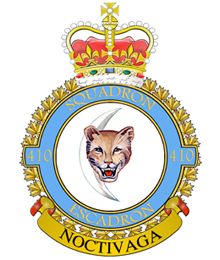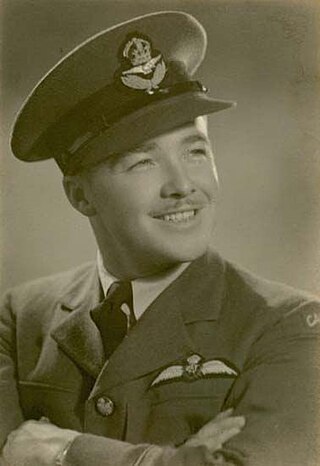
The Hawker Typhoon is a British single-seat fighter-bomber, produced by Hawker Aircraft. It was intended to be a medium-high altitude interceptor, as a replacement for the Hawker Hurricane, but several design problems were encountered and it never completely satisfied this requirement.

The Eurofighter Typhoon is a European multinational twin-engine, canard delta wing, multirole fighter. The Typhoon was designed originally as an air-superiority fighter and is manufactured by a consortium of Airbus, BAE Systems and Leonardo that conducts the majority of the project through a joint holding company, Eurofighter Jagdflugzeug GmbH. The NATO Eurofighter and Tornado Management Agency, representing the UK, Germany, Italy and Spain, manages the project and is the prime customer.

The Hawker Tempest is a British fighter aircraft that was primarily used by the Royal Air Force (RAF) in the Second World War. The Tempest, originally known as the Typhoon II, was an improved derivative of the Hawker Typhoon, intended to address the Typhoon's unexpected deterioration in performance at high altitude by replacing its wing with a thinner laminar flow design. Since it had diverged considerably from the Typhoon, it was renamed Tempest. The Tempest emerged as one of the most powerful fighters of World War II and at low altitude was the fastest single-engine propeller-driven aircraft of the war.

Number 1 Squadron, also known as No. 1 (Fighter) Squadron, is a squadron of the Royal Air Force. It was the first squadron to fly a VTOL aircraft. It currently operates Eurofighter Typhoon aircraft from RAF Lossiemouth.

Number 3 Squadron, also known as No. 3 (Fighter) Squadron, of the Royal Air Force operates the Eurofighter Typhoon FGR4 from RAF Coningsby, Lincolnshire, since reforming on 1 April 2006. It was first formed on 13 May 1912 as one of the first squadrons of the Royal Flying Corps – being the first to fly heavier than air aircraft.

No. 303 Squadron RAF, also known as the 303rd "Tadeusz Kościuszko Warsaw" Fighter Squadron, was one of two Polish squadrons that fought during the Battle of Britain along with No. 302 Squadron, of 16 total Polish squadrons in the Royal Air Force (RAF) during the Second World War. Flying Hawker Hurricanes, the squadron claimed the largest number of aircraft shot down of the 66 Allied fighter squadrons engaged in the Battle of Britain, even though it joined the fray two months after the battle had begun.

No. 41 Squadron of the Royal Air Force is the RAF's Typhoon Test and Evaluation Squadron ("TES"), based at RAF Coningsby, Lincolnshire. Its official title is "41 TES". The squadron was formed in 1916 during First World War as part of the Royal Flying Corps and served on the Western Front as a ground attack and fighter squadron. Disbanded in 1919 as part of the post-war draw down, No. 41 Squadron was re-formed as an RAF squadron in 1923 and remained on home service until 1935 when it was deployed to Aden during the Abyssinian crisis.

No. 486 (NZ) Squadron was a fighter squadron established for service during the Second World War. It was a New Zealand squadron formed under Article XV of the Empire Air Training Plan. Although many of its flying personnel were largely drawn from the Royal New Zealand Air Force, the squadron served in Europe under the operational and administrative command of the Royal Air Force.

Royal Air Force East Fortune, or more simply RAF East Fortune, is a former Royal Air Force station located just south of the village of East Fortune. It is a short distance east of Edinburgh, in Scotland. RAFEast Fortune was used as a fighter station during the First World War and later used by a night fighter operational training unit during the Second World War. The motto of the station is "Fortune Favours the Bold".

Redhill Aerodrome is an operational general aviation aerodrome located 1.5 NM south-east of Redhill, Surrey, England, in green belt land.

Royal Air Force Acklington, simply known as RAF Acklington, is a former Royal Flying Corps and Royal Air Force station located 3.2 miles (5.1 km) south west of Amble, Northumberland and 8.8 miles (14.2 km) north east of Morpeth, Northumberland.

410 Tactical Fighter Operational Training Squadron, nicknamed the "Cougars", is a Royal Canadian Air Force aircraft squadron currently located at Canada's primary training base for the CF-18, at Cold Lake, Alberta. The squadron was formed during the Second World War as an RCAF squadron under the Royal Air Force (RAF), at RAF Ayr, near Prestwick, in Scotland.

Raymond Hiley Harries, was a Royal Air Force fighter pilot and flying ace of the Second World War. Harries scored 15 victories against enemy aircraft, as well as three shared kills, two probable kills and five damaged during the war. Harries is also credited with the destruction of a V-1 flying bomb.

Dunsfold Aerodrome is an unlicensed airfield in Surrey, England, near the village of Cranleigh. It extends across land in the villages of Dunsfold and Alfold.
No. 268 Squadron RAF was a Second World War Royal Air Force squadron that operated the North American Mustang on missions over occupied Europe and in support of the D-Day landings.

Colonel Remy Van Lierde, was a Belgian pilot and fighter ace who served in the aviation branch of the Belgian Army and the British Royal Air Force (RAF) during the Second World War, shooting down six enemy aircraft and 44 V-1 flying bombs, and achieving the RAF rank of squadron leader. Returning to the Belgian Air Force in 1946, Van Lierde was made Deputy Chief of Staff to the Minister of Defense in 1954. In 1958 he became one of the first Belgians to break the sound barrier while test flying a Hawker Hunter at Dunsfold Aerodrome in England. He went on to hold several important commands before retiring in 1968.

Jack Rife Beirnes was a Royal Canadian Air Force squadron leader who flew Kittyhawk fighters on home defense in Canada and then commanded a squadron of Hawker Typhoons over Europe during the Second World War. He was awarded the Distinguished Flying Cross and Bar for his successes while serving with No. 438 Squadron RCAF. He lost his life in a flying accident at the end of his third combat tour.
No. 121 Expeditionary Air Wing is a deployable Expeditionary Air Wing of the Royal Air Force based at RAF Coningsby, Lincolnshire, England.

No. 55 Operational Training Unit RAF was an Operational Training Unit of the Royal Air Force, formed in November 1940 at RAF Aston Down to train fighter pilots.
















